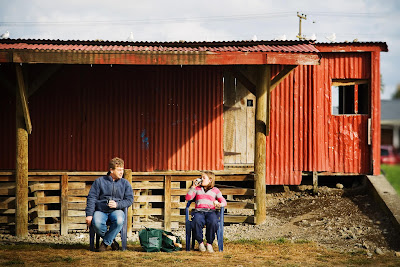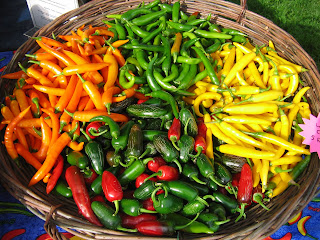So what is a Localvore then
 |
| the perfect localvore setting |
sounds like some sort of posh nosh fancy wancy uppty name for somebody who has too much time on their hands – well you can be a herbivore or a omnivore so why not somebody who pays attention to where their food comes from and commits to eating local food as much as possible. This is not some nutcase religion, it is just about eating local. It is not an all-or-nothing venture, you cannot really fail the test as it is all about taking how many small steps you take, it all helps the environment, protects your family's health and supports small farmers and food producers in your region
The first bite to being a localvore is to determine what local means to yourself and your family, it could be 100 km, if could be the south island or even the whole of NZ – it is an individual decision that you need to be comfortable with. The key thing is that by creating a boundary or a limit, no matter how large or small, you are becoming conscious of food's origin. You can even go one step further and draw a circle around your home or region and this will help you with your food choices.
We are all born localvores, it is just that sometimes we forget just exactly what is in our backyard and what is in season – the free range chooks, the trading with neighbours and the sharing of resources both over the back yards and at the dinner table, we may not be able to tackle the worlds biggest issues but we are able to help build sustainable and connected communities by supporting each other
5 Ways to Become a Localvore in New Zealand
1) Visit a farmers' market, there are now over 50 located from Invercargill to Bay of Islands – some are big, some are small but the key is that they represent their regional seasons and producers. Farmers' markets keep small farms in business through direct sales. Rather than going through a middleman, the farmer or producer will take home nearly all of the money you spend on regional produce – there are no on sellers, resellers or people that just buy in at the cheapest price and try to move it as fast as they can, regardless of the quality or where it has come from
2 Ask your supermarket manager where your meat, produce and dairy is coming from. Remember that supermarket managers are influenced by what you say and do. Let the super market managers know what's important to you!
3) Preserve a local food of the season. By freezing, bottling, preserving you get to eat and enjoy flavours all year
4) Have a look for restaurants in your area that support local farmers and producers. Ask the re restaurants and chefs about their ingredients directly, or by asking your favourite farmers what restaurant accounts they have. Frequent the businesses that support your farmers in your region, fresh from the farm gate to the dinner plate
5) Ask about origins. Not locally grown or caught? Then where is it from? What you may have taken for granted as NZ produced may come as a surprise. Share this with family and friends
Honey-spiced apricots
Serve these with dollops of yoghurt for breakfast or dinner, or add a crumble topping and bake in the oven for a quick and easy dessert. If all else fails, just eat them straight from the jar.
2 kg whole Marlborough apricots
cinnamon sticks and cloves for each jar
4 cups white wine vinegar
500 g Marlborough honey


Hi Chris,
ReplyDeleteI want to make this from your cookbook, but am not sure of the best way to seal the bottles. Do you just use the overflow method?
Great book, by the way.
Thanks!